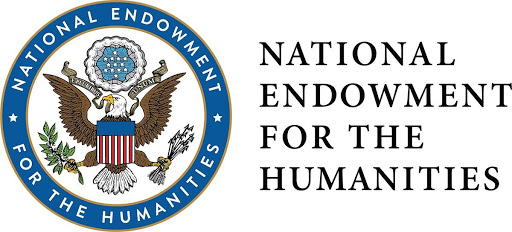When I did this painting [commissioned to speak about Covid in Indian Country], at the same time that the COVID was happening, I heard this rumor, which may be true, it was on Facebook. So you don't really know if it's true or not, it's Facebook, but... That the Indian maiden on the Land O'Lakes butter container was going away, and I'm thinking, "What happened? Was it the pandemic? Did she get COVID-19? Is that why she's gone?" So, to me, that was a relationship.
And those are the thoughts in my mind, they were the original ones, they're not gonna go away. And I have to wonder, "Why did she leave? Are people happy about this? How can they be happy about this?" Because I was raised with her. When I'd go get butter for the family, even as a child, there she was, in the refrigerated section of the store, and she's very beautiful. The artist who did it, Patrick DesJarlait, did a magnificent job. And I would have to think, if I was in his place, as an artist, let's say I got commissioned to do the woman, the maiden, on the butter box, and I would know, she's gonna be here for a very long time. The world, well, the United States, everyone in the United States is gonna see her. And I would definitely want her to be extremely beautiful, intelligent looking, the woman that represents our tribe, to the general public.
See, the thing about that piece of art is it's seen by everyone.. So, to me she was very important. Also as a child growing up, oddly, my father, also Ojibwe, would not allow margarine in the house. There's stories behind that one. So we always had butter. To me, I had to make a relationship of, "margarine's bad, butter is good." Here's our beautiful butter maiden, I'm gonna bring her home when I go to the store. So she very much became a part of my childhood and we just grew up with her. And now, when I go and I look in those refrigerated compartments in the grocery stores, I look for the butter and there's only the landscape. Where did she go? Why did she leave us? Is someone happy about this? I'm not happy about that. [Laughs]
But times change. People's thinking evolves, and I'm not always sure if it's for the better, but we do progress and move forward. So I'm sure I'll get a good reason why she's gone. So because of those things I just explained to you, those reasons, I associated in my painting, the landscape of the butter maiden, that's what I'll call her, the butter maiden, and I painted the landscape on the bottom of my painting. I looked at the box, at the beautiful landscape, that's what I put at the bottom of my painting, and she was no longer there. And I associated COVID, diseases that have affected massive amounts of people throughout time, throughout history, and that's the reason she's gone. So my painting does have that landscape at the bottom.
And then as we go up, I put a bear, because in Ojibwe culture, the bear is like a teacher, the bear is in charge of the medicines for us. And to me, he is the one who's gonna show us the medicines to help us get through this pandemic. So there, in the shadows, is a red bear going along, through the sky actually.
And then in front of the bear is a transparent door. And I put the door there, because I was doing research on previous pandemics throughout the world. And in one of those pandemics, I think it was the Plague, what would happen is the people who... The families who were suffering from that disease, it would be painted on their door, usually in red, words that would let other people know, "Don't come here. We have this disease." So on the door, I painted the words, "COVID," and then I had it... If you look closely, you'll see that it's dripping down, not quite into our landscape yet, but eventually it will spoil our pristine, butter maiden landscape. So that was some of my thinking behind that piece.
— Karen Savage-Blue

Stories of Wisdom from Bodies in Separation (SWaBS): Archiving the Coronavirus Pandemic Through the Lens of Humanities has been made possible by a major grant from the National Endowment for the Humanities: Coronavirus Aid, Relief, and Economic Security (CARES) Act.
Any views, findings, conclusions, or recommendations expressed in this project, do not necessarily represent those of the National Endowment for the Humanities.
To see the full interviews
and media for this project
Visit Archive
To contribute your own materials to the Northeastern Minnesota COVID-19 Community Archive Project, please Visit Library
